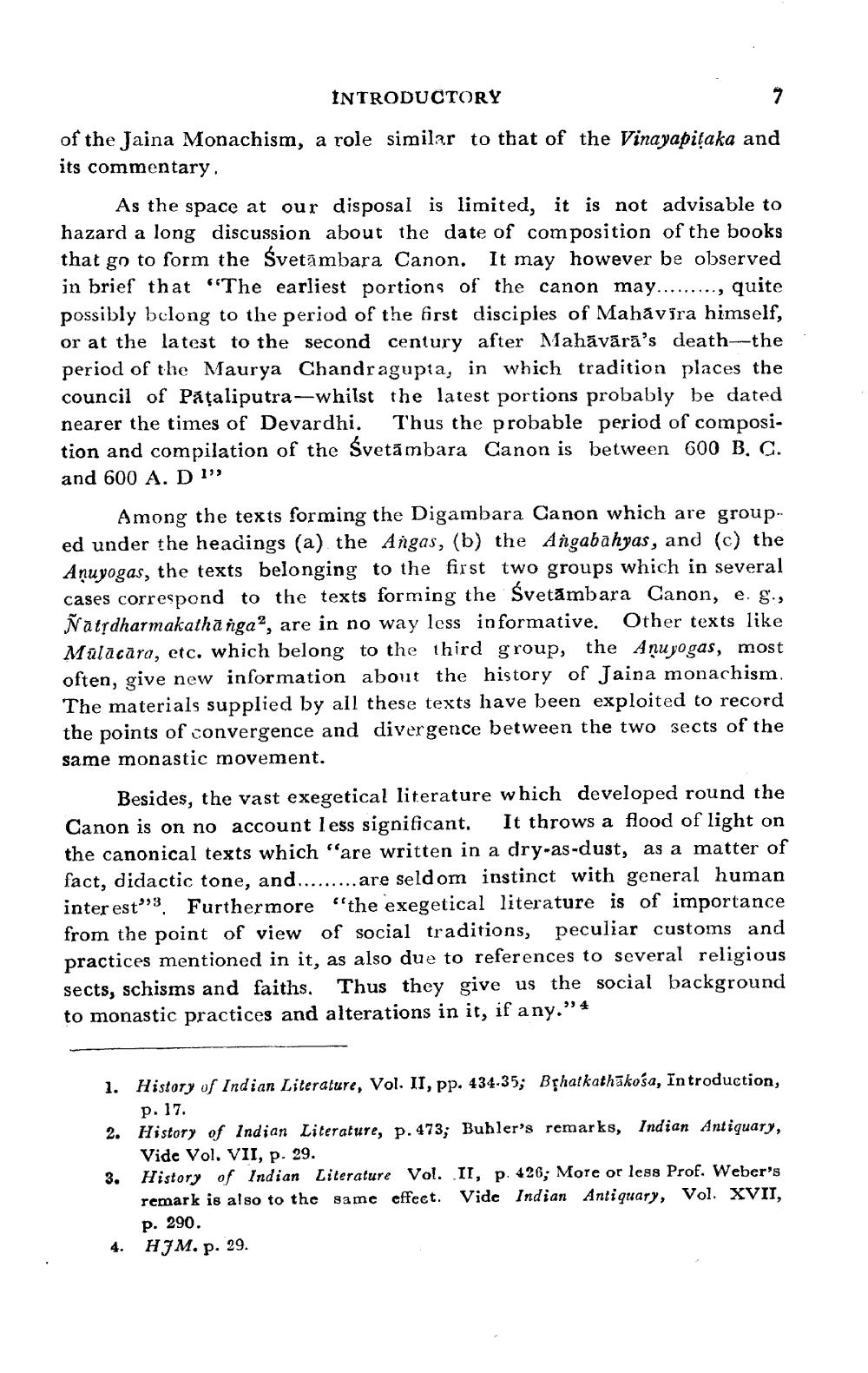________________
7
INTRODUCTORY
of the Jaina Monachism, a role similar to that of the Vinayapiṭaka and its commentary.
As the space at our disposal is limited, it is not advisable to hazard a long discussion about the date of composition of the books that go to form the Svetambara Canon. It may however be observed in brief that "The earliest portions of the canon may........., quite possibly belong to the period of the first disciples of Mahavira himself, or at the latest to the second century after Mahāvārā's death-the period of the Maurya Chandragupta, in which tradition places the council of Pațaliputra-whilst the latest portions probably be dated nearer the times of Devardhi. Thus the probable period of composition and compilation of the Svetambara Canon is between 600 B. C.
and 600 A. D ""
Among the texts forming the Digambara Canon which are group. ed under the headings (a) the Angas, (b) the Angabahyas, and (c) the Anuyogas, the texts belonging to the first two groups which in several cases correspond to the texts forming the Svetambara Canon, e. g., Natṛdharmakathanga2, are in no way less informative. Other texts like Malacara, etc. which belong to the third group, the Anuyogas, most often, give new information about the history of Jaina monachism. The materials supplied by all these texts have been exploited to record the points of convergence and divergence between the two sects of the same monastic movement.
Besides, the vast exegetical literature which developed round the Canon is on no account less significant. It throws a flood of light on the canonical texts which "are written in a dry-as-dust, as a matter of fact, didactic tone, and... .....are seldom instinct with general human interest". Furthermore "the exegetical literature is of importance from the point of view of social traditions, peculiar customs and practices mentioned in it, as also due to references to several religious sects, schisms and faiths. Thus they give us the social background to monastic practices and alterations in it, if any."4
1. History of Indian Literature, Vol. II, pp. 434.35; Bhatkathakosa, Introduction, p. 17.
2. History of Indian Literature, p. 473; Buhler's remarks, Indian Antiquary,
Vide Vol. VII, p. 29.
History of Indian Literature Vol. remark is also to the same effect. p. 290.
HJM. p. 29.
3.
4.
II, p. 426; More or less Prof. Weber's Vide Indian Antiquary, Vol. XVII,




